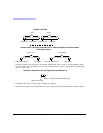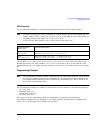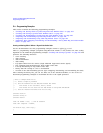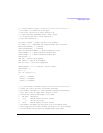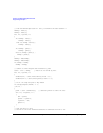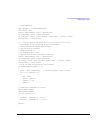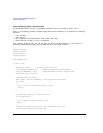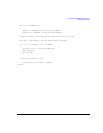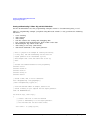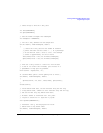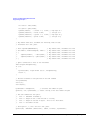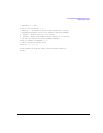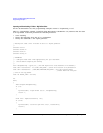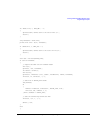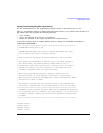
238 Agilent N518xA, E8663B, E44x8C, and E82x7D Signal Generators Programming Guide
Creating and Downloading Waveform Files
Programming Examples
Creating and Downloading I/Q Data—Big and Little Endian Order
On the documentation CD, this programming example’s name is “CreateDwnLd_Data_c++.txt.”
This C++ programming example (compiled using Microsoft Visual C++ 6.0) performs the following
functions:
•error checking
• data creation
• data scaling
• text file creation for viewing and debugging data
• byte swapping and interleaving for little endian order data
• interleaving for big endian order data
• data saving to an array (data block)
• data block download to the signal generator
// This C++ program is an example of creating and scaling
// I and Q data, and then downloading the data into the
// signal generator as an interleaved I/Q file.
// This example uses a sine and cosine wave as the I/Q
// data.
//
// Include the standard headers for SICL programming
#include <sicl.h>
#include <stdlib.h>
#include <stdio.h>
#include <string.h>
#include <math.h>
// Choose a GPIB, LAN, or RS-232 connection
char* instOpenString =”lan[galqaDhcp1]”;
//char* instOpenString =”gpib0,19”;
// Pick some maximum number of samples, based on the
// amount of memory in your computer and the signal generator.
const int NUMSAMPLES=500;
int main(int argc, char* argv[])
{
// Create a text file to view the waveform
// prior to downloading it to the signal generator.
// This verifies that the data looks correct.
char *ofile = “c:\\temp\\iq.txt”;



